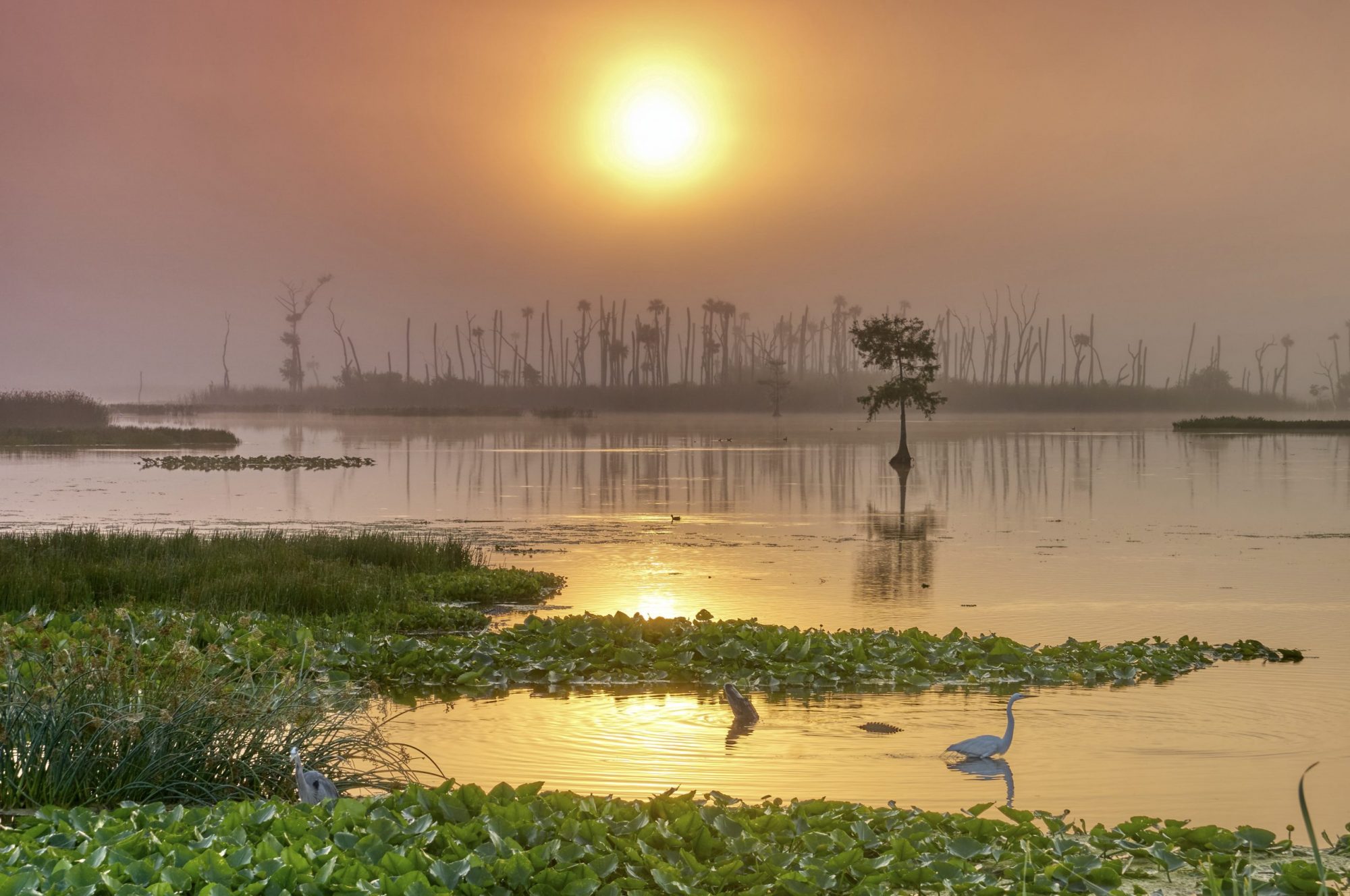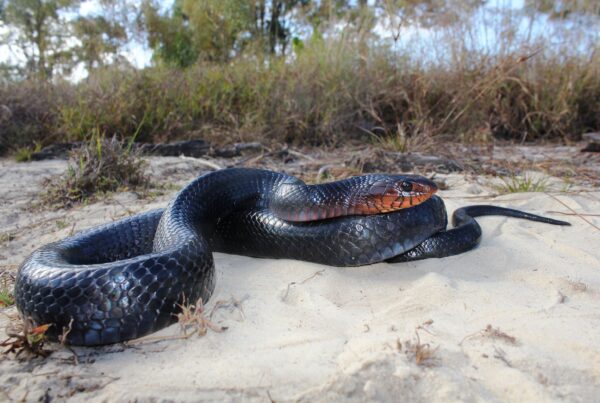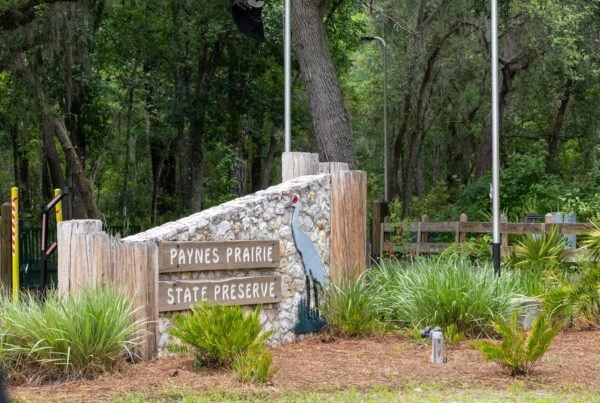
“Wild Orlando Sunrise” by Brian Kamprath, Orlando Wetlands Park
A wetland is not an island.
It seems self-evident, though in practical terms our nation’s waterways are connected — even when they are not wet year-round.
Broad swaths of the more than 290 million acres of U.S. wetlands are now at risk thanks to the Supreme Court’s ruling in the Sackett v. EPA case. With one opinion, backed by just five justices, the court rolled back federal protections for wetlands that filter clean drinking water for people, provide critical flood protection for communities, and serve as essential wildlife habitat. EPA estimates that the Sackett decision removes federal Clean Water Act protections from up to 63% of wetlands and threatens protections for up to 4.9 million of miles of streams.
We only need to look to half a century ago to see why these protections have been invaluable.
The post-war boom has fueled rapid development and accelerated industrialization throughout the country. What was a golden age for the U.S. economy was not without its toll: Just two decades after the war, 7.6 million acres of wetlands — an area roughly the size of Maryland — were destroyed in the lower 48 states. Toxic waste and sewage were dumped, untreated, into the nearest stream. A series of high-profile river fires — yes, rivers on fire — are why Congress intervened and passed the Clean Water Act.
Passed with sweeping bipartisan support 51 years ago, few laws have been as transformative to the nation’s quality of life as the Clean Water Act. The goal of the Act was nothing less than “to restore and maintain the chemical, physical, and biological integrity of the Nation’s waters.” To achieve this goal, Congress created a cooperative federal structure that gave the Environmental Protection Agency and the U.S. Army Corps of Engineers working with states broad authority to protect important waters throughout the watershed.
“Sunset Viera Wetlands” by Edith Lassonde
While its implementation has certainly met with roadblocks, it is hard to overstate the ongoing protective importance of the Act. The law, according to a recent report, has helped policymakers limit pollution, prosecute polluters, and fund restoration efforts. Prior to the Sackett ruling, its National Pollutant Discharge Elimination System program alone prevented 700 billion pounds of pollutants from entering our waters annually. Approximately 200,000 “point source” polluters — such as sewage treatment facilities, paper mills, petroleum refineries, indoor hog farms, and certain construction sites — fall under the law’s jurisdiction.
America’s conservation of wetlands has been one of the rare success stories amidst the global wildlife crisis and growing extinction risks that threaten nearly every branch of the tree of life. In fact, the most recent State of the Birds report underscores that even with birds nearing a tipping point, waterfowl and ducks have defied the broader trend toward extinction because of concerted and proactive investments through laws like the North American Wetlands Conservation Act and the protections of the Clean Water Act.
“Morning Light” by Gay Marlin, Great Blue Heron in Cypress Wetlands
The Sackett ruling will not unilaterally reverse the gains of ducks and waterfowl, but it will open up essential wetlands to destruction development and unthinkable risks.
It also leaves people at higher risk of flooding and polluted drinking water. Wetlands are our rivers, lakes, and streams’ kidneys — essential filters that absorb pollutants before they flow into our drinking water systems. They also are sponges for flood waters. In one well-studied example, wetlands prevented an estimated $625 million in damages during Hurricane Sandy.
The Supreme Court’s decision to strike protections for many of the nation’s more than 290 million acres of wetlands will have profound implications for most states, including Florida, Sackett does not need to be the end of the story. Nor should it be the only way our leaders mark the Clean Water Act’s 51st anniversary.
If Congress is unable and unwilling to renew its commitment to what was a bipartisan achievement for people, wildlife, and clean drinking water, Florida’s local governments and municipalities should step into the breach. Until the federal and state government is willing and able to protect our clean drinking water and the communities and wildlife that depend on seasonal wetlands, our county and city leaders should use every power at their disposal to do so.
Our water, wildlife, and way of life in Florida is worth it.






I pray that all living and visit Florida, will learn to know what Florida truly is, and don’t try to turn it into what they want it to be or turn it into where they come from. May our Governor, and all those involved in attending to the well-being of Florida and God’s creatures, choose to respect and care for God’s creation.